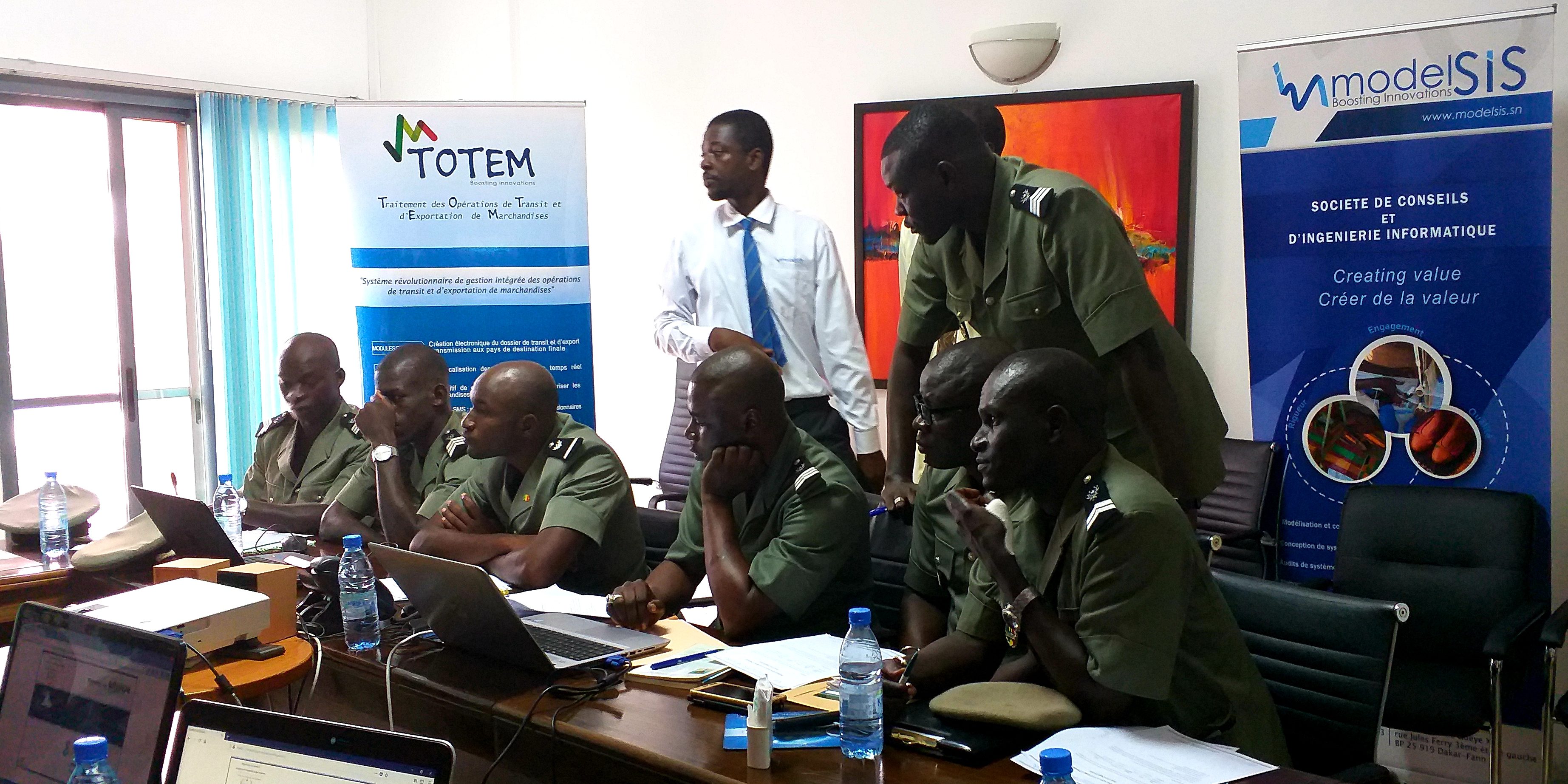
February 24th 2020 – The Customs IT Department launched today the deployment of some new systems including the automated valuation assessment database dubbed VALOREM and the computerized transit management system called eTransit.
The launching of these systems is the culmination of several years of effective collaboration between technical teams of DSID and ModelSis, as part of the Import Verification Program (PVI, 2014 – 2019), the third system expected from ModelSis (TANDEM) was launched in pilot back in 2017 to the great satisfaction of stakeholders. For the record, TANDEM is a real time data crossing platform bringing on board the main State finance management bodies (Customs, Tax Authority, Treasury, etc.).
The commissioning of these systems fits into the efforts at empowering customs administrations, as claimed in unison by the Directors General of Customs of Africa during their meeting of June 7th 2012 in Niamey, Niger when they expressed their willingness to endow customs services with modern control tools.

It was in 2013, after a two-round tendering process, that ModelSis, in consortium with COTECNA, was attributed the public service delegation contract for PVI whereby the three aforementioned systems were supposed to be developed, deployed and commissioned.
Thus, after several years of modelling, sketching, development, integration tests with the GAINDE system, and training by the ModelSis team, the Senegalese customs administration has given a concrete expression of its willingness to modernize its control instruments.
Actually, VALOREM is a decision-support tool that enables Verification Officers to better assess the values declared for imported goods based on an econometric analysis of the data stemming from various sources. At stake, customs will avail itself with a reliable tool to assess the transactional value, and officers will make use of a system integrated into GAINDE, uniform and scalable based on a dynamic database. Projections, with the commissioning of VALOREM suggest an exponential evolution of customs duties in a near future.
For its part, the eTransit system introduces paperless procedures at the Port area and integrates a novelty that makes it possible for the authorized users to monitor transit cargos in real time.
Actually, beyond the elimination of paperwork in procedures at the Port, ModelSis has integrated simple technologies that enable field officers, regardless of the environment in which they operate, to process and view entries through the mobile version of the system uploaded in their phone.


